 |
JAPANESE PRINTS
A MILLION QUESTIONS
TWO MILLION MYSTERIES
Ukiyo-e Prints浮世絵版画 |
|
formerly Port Townsend, Washington now Kansas City, Missouri |
|
TSUKIOKA YOSHITOSHI 月岡芳年 1839-1892 |
||
| Kappa Control Method | ||
|
Series Title: Tōkyō kaika kyoga meisho 東京開化狂画名所 "Comic Pictures of Famous Places in the Early Days of Tokyo" |
||
| Size: 6 3/4" 9 1/8" | ||
|
Date: 1881, 1st Month, 6th Day Meiji 14 明治14 |
||
|
Publisher: Tsunashima Kamekichi 綱島亀吉 |
||
|
Signed: Yoshitoshi giga 芳年戯画戯 |
||
|
There are other copies of this print in the Museum of Fine Arts in Boston, the Adachi Museum of Art, Philadelphia Museum of Art
and
in Venice. |
||
|
$360.00 SOLD! |
|
|
|
|
|
|
"Drinking the liquid in which the soles of old hemp slippers had been boiled counteracted poisons acquired from eating beef and horsemeat. It also took care of flatulence."
Quoted from: Daily Life in Traditional China: The Tang Dynasty by Charles Benn |
|
|
THE MIST-DESCENDING FLOWER-BLOSSOMING MAN 霧降花咲男 きりふりはなさきおとこ |
|
|
|
One of my best friends is the eleven year old son of my best friend. Ever since this kid was a small boy he like so many other males I have known has been incredibly amused by flatulence. I think this is more an male thing than not, but can't say for sure. Anyway, this young man's fascination with what can only be called an off-color subject is not unique to him. Most likely it is universal. It might even go back as far as our pre-historic cavemen ancestors. Imagine two hairy troglodytes sitting around after ingesting an antelope they killed and consumed tooting away in some kind of bizarre competition. Well...could the proto-Japanese have been any different? I don't think so. All one has to do is to take a look at "The mist-descending flower-blossoming man" and his particular form of crowd-pleasing entertainment. In 1774 this man "...demonstrated his abilities to swallow great quantities of air and expel the same in modulated flatulent arias." This is what Andrew L. Markus reported in an article for the Harvard Journal of Asiatic Studies.* Markus continues: "Not only was his talent the inspiration for Gennai's Hōhiron 放屁論 (Disquisition of flatulence, 1774; sequel 1777)..." plus a portrait of him in the newly multi-colored printed form of Japanese woodblock prints. |
|
|
|
*Andrew L. Markus, Harvard Journal of Asiatic Studies, vol. 45, 1985, p. 530. |
|
ON ANOTHER PAGE I NOTED THAT MANY OF OUR VISITORS
MAY WELL BE UNI-FOCUSED ON A PARTICULAR TOPIC. FOR EXAMPLE, A SEARCH ON GOOGLE OR YAHOO OR WHATEVER ON 'FLATULENCE' OR 'FART' MIGHT WELL HAVE DIRECTED YOU HERE. THEN, PERHAPS, ONCE YOU HAVE SEEN THIS PAGE YOU LEAVE. HOWEVER, THERE IS MUCH MORE HERE THAN MEETS THE EYE AND WHETHER OR NOT YOU ARE INTERESTED IN JAPANESE CULTURE OR PRINTS IN GENERAL I HOPE THAT YOU WILL EXPLORE SOME OF OUR OTHER PAGES. YOU MIGHT FIND MANY OF THEM ENTERTAINING AND INFORMATIVE.
IN FACT, THE CAMEL --- SEEN BELOW --- AND I WOULD LIKE YOU TO LINGER A BIT LONGER AND TO EXPLORE MORE THAN JUST KAPPAS AND FARTING.
CLICK ON THE CAMEL'S NOSE TO GO TO OUR HOME PAGE
BUT BEFORE YOU DO THERE IS MUCH MORE TO READ AND SEE FURTHER DOWN THIS PAGE. |
 |
 |
綱島亀吉 |
||||||
|
Meiji 14 1st Month 6th Day |
Tsunashima Kamekichi publisher's mark found in the lower left of this print |
|||||||
|
KAPPA |
||
|
河童 |
||
|
THE WORD ITSELF |
||
|
The character 'ka' 河 means river while 'do' 童 --- here pronounced 'pa' when combined with 'ka' --- means child. Hence: 'River child." That is the literal translation and the actual one means something like a water sprite or elf. However, it also means "an excellent swimmer" or by extension "like a baby in water." I would suppose that Kyoko Iwasaki (岩崎恭子), the winner of the Olympic Gold Medal in Barcelona in 1992 for 200m breaststroke could easily be described as a kappa. Then there is Mark Spitz who could not have been any more kappaesque than a real kappa. And what about all of those synchronized swimmers? Kappas all.
In some areas of Japan the mud-turtle is referred to as a kappa. (1) |
||
|
|
||
|
A General Description |
||
|
If you were to research the kappa and weren't willing to rely on just one source you would find a lot of contradictory material. The questions of "who, what, where and when" would be extremely confusing. This is not unusual: the Grimm fairy tales which we read as children are the expurgated versions and considerably removed from the originals. They are "PG-Rated." Not dissimilar is the issue of the ancient Greek myths. Any Classics scholar would tell you that there are numerous variations on each of the myths --- even to the point that parentage may vary from tale to tale.
Kappas are described as supernatural amphibious creatures the size of a pre-pubescent child. They have beaks or snouts, are winged or wingless, covered with blue-green scales and give off a fishy odor or they are like chameleons and hence are hard to spot. In fact, it is hard to pin down a single description. It is somewhat like the police taking witness reports of a crime: no two accounts seem to quite line up. But there is one feature all the experts can agree upon: kappas have a "saucer-like depression on top of the head [which] contains water." This seems to be a basic factor in their being. As long as there is water in this depression than the kappa has unusual strength. However, if it spills or dries out the kappa is described as anywhere from powerless to dead. Don't forget Samson's secret to his superhuman power was in his hair. The Old Testament, Peter Paul Rubens and Victor Mature have made this eminently clear. But I digress.
Kappa tales can't even tell you whether these creatures are good or bad. However, by and large, the weight of evidence is on the negative side. Some say that the only thing that kappa like to eat more than small children is cucumbers. I suppose if the Japanese had invented the sandwich then kappa might have eaten cucumber with child on rye - hold the mayo. A friend of mine says that in Japan that when property owners don't want people skinny dipping in their ponds then they post kappa warning signs. The kappa's most insidious trait is described in the Kodansha Encyclopedia of Japan (vol. 4, p. 156): "In particular the kappa delights in grabbing its victims and tearing out the liver through the anus." Years ago I read a variation on this that stated that they sucked the liver out through the anus. Either way it can't be a very pleasant experience.
One other general note: not only are they slippery little devils, but they are also remarkably double jointed. Perhaps this explains their penchant for sumo wrestling. |
||
|
|
||
|
|
|
To the left can be seen a detail of a Yoshitoshi chuban print of a human sumo wrestler observing a kappa sumo match.
|
|
|
||
|
|
||
|
Is It Safe To Swim Anywhere? |
||
|
According to Mock Joya's Things Japanese (2) by Mock Joya no less kappa live "...in muddy lakes and rivers, never being found in clear or rapidly flowing streams." |
||
|
|
||
|
"THE KAPPA AND THE FART" |
||
|
河童 + 屁 かっぱ + へ |
||
|
Among the many descriptions of kappa there are references to their fondness for noisy flatulence. In Comic Genius: Kawanabe Kyōsai there is an illustration of a print from 1863-66 showing a kappa under the water with his rear end pointed toward fishermen on the shore. The title of the print is "Good-For-Nothing" which is a play on words. The catalogue states: "...here Kyōsai has shown a kappa whose fart is so strong that fishermen fly away, making them truly good-for-nothing." (3)
Japanese art has a long history of such bawdiness. There are very early hand scrolls which we are found under the rubric of 'fart wars or battles' (屁戦 or へがっせん). The title alone should be self-explanatory. According to Timothy Clark in Demon of Painting: The Art of Kawanabe Kyōsai the tradition of such works may have originated with the Abbot Tōba (1053-1140). (4)
The Japanese are not alone in this fascination. According to the Oxford English Dictionary the first use of that word as a noun appears in Chaucer's "Miller's Tale" from circa 1386 while there may be an even earlier reference in the anonymous "Cuckoo Song" of circa 1250 where it appears as a verb.* |
||
|
(1) Mock Joya's Things Japanese, by Mock Joya, The Japan Times, ltd., 1985, p. 413. (2) Ibid., p. 412. (3) Comic Genius: Kawanabe Kyōsai, 1996, P. 210, CAT. #122-10. (4) Demon of Painting: The Art of Kawanabe Kyōsai, by Timothy Clark, British Museum Press, 1993, p. 108. |
||
|
|
||
|
ON A PERSONAL NOTE REGARDING THE OTHER "F" WORD A DISCLAIMER |
||
|
|
||
|
*Despite what people will say, I don't like this f____ word. Friends and others will say "Sure?!!!!" with the last part drawn out and with a raised eyebrow, cocked head, wry, little smile and a modicum of eye rolling. However, it is true! I don't like the word and never have. I never use it --- except in quotations or by way of example like the text above --- and I would like to point out that this "f" word does not appear once in all of the works of Shakespeare --- not even spoken by Falstaff or Bottom. Shakespeare would hardly be so indelicate. |
||
|
|
||
|
DRINKING COLD, DAY OLD TEA IS AS BAD AS BEING NEAR A KAPPA BREAKING WIND! |
||
|
Jippensha Ikku in his comic novel "The Shanks Mare" about the adventures of Kitahachi and Yajirōbei makes this point about being offered day old tea. Yaji makes this comment while negotiating the purchase of a replacement kimono for his now naked friend Kita. After saying it he reminds himself that he want to use a toilet. (This novel is very scatological.) |
||
|
The reference above is from Hizakurige or Shank's Mare, by Jippensha Ikku, Charles E. Tuttle Company, Rutland, Vermont and Tokyo, Japan, 1992, pp. 278-9. |
||
|
FORGIVE ME BECAUSE THIS IS A BIT TONGUE IN CHEEK: |
|
|
|
HERE IS AN EXPRESSION I RAN ACROSS WHILE RESEARCHING THIS PAGE - |
|
河童も川流れ kappa mo kawa nagare |
|
WHICH MAY MEAN |
|
"Anyone can make a mistake"
For an updated emendation of this translation please read the passage below. |
|
|
|
"EVEN A KAPPA CAN DROWN"
On March
30, 2005 someone who referred to himself as Final Magus (not his birth name)
wrote to tell me that the phrase "kappa mo kawa nagare" indicated "A
drowning Kappa." With that, I asked Eikei (英渓) our frequent correspondent
and advisor to check this out. Eikei wrote back with his own translations:
"Even a kappa can be swept away by the river OR Even a kappa can drown."
This conformed to the information provided by Final Magus. Hence, we will
now go with the concept that a drowning kappa loosely converts to belief
that if a kappa can drown then anyone can fail. We will opt for this
correction until the next or better one comes along. For this we want to
thank the sharp eye of Final Magus. |
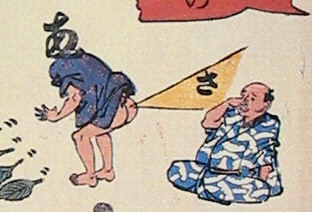 |
|
|
||
|
Yoshitoshi's print does not exist in isolation. Above on the left is a detail of a giga or humorous print by Hiroshige II. The one on the upper right is by Yoshifuji. Both come with sound effects. The image shown below from circa 1843-7 is a detail of a fictitious map with islands and provinces much like the real map of Japan. Obviously the northern areas would not be a tourist attraction. |
||||
|
|
|
|
|
|
|
|
FUN AND GAMES AT COURT
The image above is from a traditional Japanese book or ehon illustrated by Utagawa Kuniteru which basically deals with the theme of court diversions: musical gatherings, tugs of war, badminton or what passes for it in the West, poetry readings, etc.
However, here we see fun and games taken to a wholly different level.
One can't help but think of juvenile males everywhere. From the Scout camp to the frat house to the military barracks. Left to their own devices boys will be boys. This is not just a Japanese obsession although it would appear so from all of the pictures on this page.
What amazes me is that they didn't find any similar images at the cave at Lascaux. |
|
|
|
|
|
|
|
Could this be the inspiration of synchronized swimming? |
|
|
And Then There Is Always KAPPAMAKI 河童巻 Cucumber Sushi |
|
|
|
|
|
"...and half-chewed cucumbers rained down" |
|
Kappa really like cucumbers. If you have them growing in your garden and suddenly some or all of them go missing then there is only one true logical explanation - kappas. If you are being chased or attacked by a kappa one fairly sure-fire way of escape is to throw cucumbers at them --- sort of like the Henny Youngman joke: "Take my wife, please." The obvious answer to avoid kappa assault is to always carry a bunch of cucumbers around with you which, of course, brings to mind a variation on Mae West's famous dictum: "Is that a [fill in the blank] in your pocket or are you just happy to see me?"
In "Kappa" by Akutagawa Ryunosuke (芥川龍之介) the author describes a scene in which a large number of kappas have gathered and a melee ensues: "...chairs were up-ended, programs flew...and, whoever threw them I've no idea, empty cider bottles, pebbles and half-chewed cucumbers rained down." (1) That must have been one-hell-of-a-fight for a kappa to relinquish his much beloved cucumber. |
|
|
|
|
|
IF YOU ARE WHAT YOU EAT THEN WHAT ARE YOUR CHILDREN? |
|
In "Kappa" the human story teller notes that the children of a kappa acquaintance of his look an awful lot like cucumbers. (2) |
|
|
|
(1) Kappa, by Ryunosuke Akutagawa, Tuttle Publishing, 1970, p.70. On the cover is a detail of a print by ascribed to Hotei Gosei from the collection of the Victoria and Albert Museum in London. However, the signature on the print looks more like that of Hokuga and is an image of a kappa stradling a large curved cucumber. How phallic is that? Well, if you saw it you would know that it is doubly so once you have seen the image of the kappa itself. And all of this before Freud explained it all to us. (2) Ibid., p. 81. |
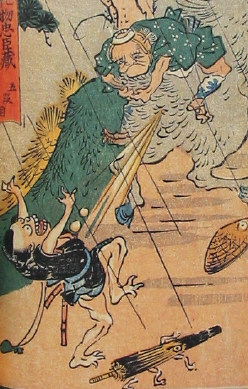 |
||
| Above is a detail of another giga print. This one is by Yoshitoshi's teacher Kuniyoshi. I can't swear that that is gas coming out of the back end of a boar, but I am not sure it matters all that much. (Note the walking umbrella with an eye at the bottom. Now there is a topic for you.) |
|
AND NOW FROM THE WEST A FINAL NOTE PERHAPS |
|
|
|
There is a story about the Earl of Oxford who when bending low before Queen Elizabeth I broke wind. It must have been a noticeable occurrence because he left the country shortly there after for a seven year, self-imposed exile. Upon his return and his reception at court the Queen is reported to have said: "My Lord, I had forgotten the fart." |
|
|
|
Recently I was reading a book review from the New York Times of Benjamin Franklin: An American Life by Walter Isaacson. The reviewer made reference to Franklin and flatulence. However, the reviewer got it somewhat wrong. He said: "Among the items that were new to me: that Franklin investigated ways to make flatulence less odorous..." I was intrigued because of the work I was doing on this page.
A quick glance of the index of Isaacson's new volume was not much help. The key, trigger words were not there, but after a little digging I found the passage and laughed out loud in the bookstore. It seems that Franklin had written and self-printed a satirical --- I repeat: satirical --- tract which was not meant for public consumption, but which he did send to a few select friends. The key point: if someone could invent a method of making the offending odor more like perfume then that person would have contributed more the advance of Western civilization than Aristotle, Newton or Descartes. |
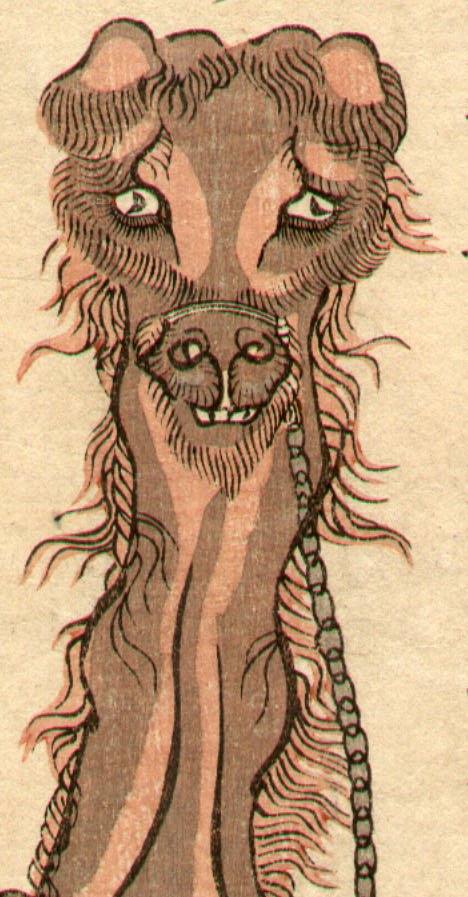
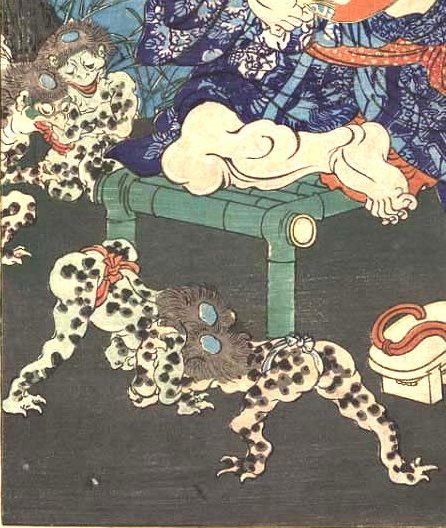
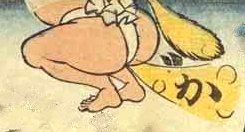
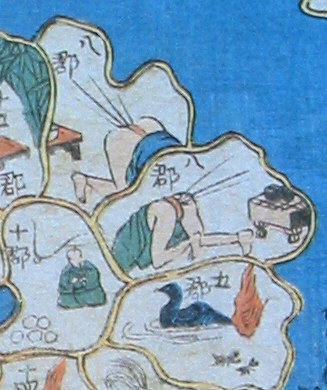

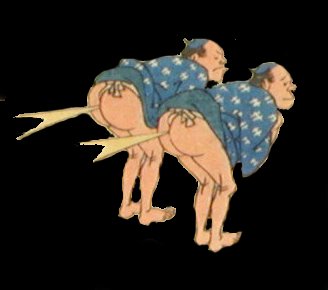
 HOME
HOME